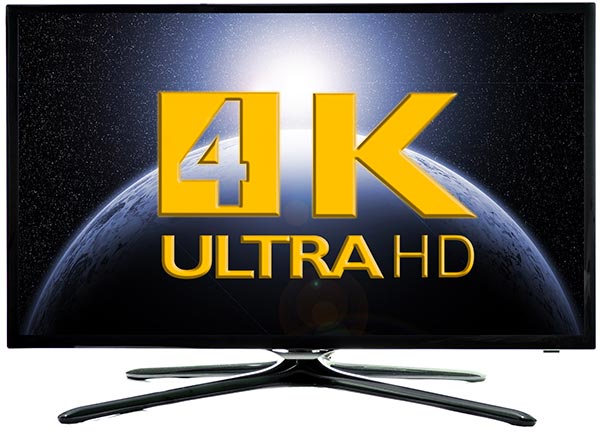 TV technology has really evolved in the past few years. One of the newest TV technologies to hit the market is 4K. Of course, 4K has been making news headlines for quite some time. However, back then, it was something aimed at the early adopters and the well-to-do.
TV technology has really evolved in the past few years. One of the newest TV technologies to hit the market is 4K. Of course, 4K has been making news headlines for quite some time. However, back then, it was something aimed at the early adopters and the well-to-do.
Now, 4K has entered the realm of the mainstream and that’s excellent news for the rest of us. In fact, 4K is now the official standard.
Naturally, our curiosity about this amazing new technology has peaked and that’s why we decided to create this mini-guide of sorts to help you figure out what 4K is all about.
What is 4K?
The term 4K is used in reference to the TVs ability to offer 4 times the resolution normally offered by HD TVs. To put it simply, a 4K TV can provide high levels of image clarity; far more than what you would expect from your current HD TV.
This is because 4K TVs contain a high number of pixels. In a HD TV, you would expect to find 1080 horizontal pixel rows and 1920 vertical pixel rows. However, in a 4K TV, the overall resolution amounts to 3840x2160. This is just a little less than the number of pixels you would find on a cinema screen, which has a 4096x2160 pixel resolution.
So, now, you’re obviously considering buying a 4K TV. Well, there are a few things to consider when making the purchase decision. Here’s what you need to know.
1. Is It Really 4K?
As stated earlier, 4K TVs offer 4 times the resolution of a HD TV. In other words, 4K TVs display around 8,000,000 pixels. You may not notice the difference right away, but, you will notice it eventually. Also, 4K TVs actually need 4K content to provide the 4K experience.
That’s one of the issues with 4K TVs. Yes, they can upscale standard HD content and present it in 4K resolution. However, the HD content isn’t going to have 4K clarity. To really enjoy 4K richness, you must view 4K content.
As of now, there are a few streaming sites like Netflix and YouTube that offer content in 4K. However, you might need some fast internet service because 4K content is massive in size.
Also, if you’ve got a data cap on your internet connection, you might have to increase your data cap or find a provider that doesn't cap data. 4K content uses plenty of bandwidth. In fact, your average 4K content is twice the size of Full HD (1080p) content. So, binge watching a TV show at 4K will quickly see your data consumption going off the charts.
But, the good news is that things will get cheaper as 4K moves into the mainstream even further.
Anyway, getting back to the point, make sure you’re actually buying a 4K TV. Some companies can be clever with their marketing jargon and if you’re not careful, you’ll end up with a regular HD TV.
Don’t Buy Anything Less than UHD Premium
TV manufacturers have established something called the Ultra High Definition Premium standard. This is important, so, make sure your 4K TV has this branding.
For starters, UHD Premium branding guarantees that your 4K TV has a minimum resolution of 3840x2160 pixels, which is actual 4K resolution. It also offers more color depth, which simply means that the colors look more realistic.
UHD Premium branding also means that the TV offers minimal brightness with whites being more visible and black areas appearing darker. The minimal brightness allows for a more relaxed viewing experience. A UHD Premium 4K TV will also display a wider range of colors (almost 100% of the P3 color gamut).
Not all manufacturers mark their packaging with “UHD Premium”, which means you will need to carry out some research to ensure that your 4K TV is UHD Premium branded before you buy it.
2. Make Sure Your 4K TV has HDR
HDR allows for greater image clarity. In fact, it is the key component involved in providing more color depth and richer images. Without it, your 4K TV is practically pointless. So, do not buy anything that does not have HDR.
There are generally 2 standards when it comes to HDR technology – HDR10 and Dolby Vision. For Dolby Vision, your 4K TV must have a chip installed in first to handle additional FX processing, so if this is an important feature for you make sure to check that your TV supports Dolby Vision right out of the box.
Some brands such as Vizio and LG offer both HDR formats in their 4K TVs. If the picture quality and other features line up with what you're in the market for, then it is better to opt for such models because you have the benefit of greater flexibility, allowing you to enjoy your 4K content with either HDR10 or Dolby Vision.